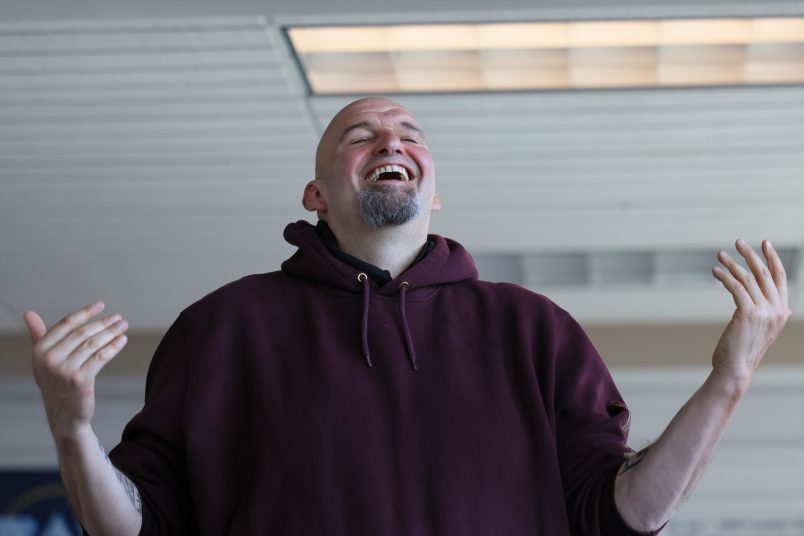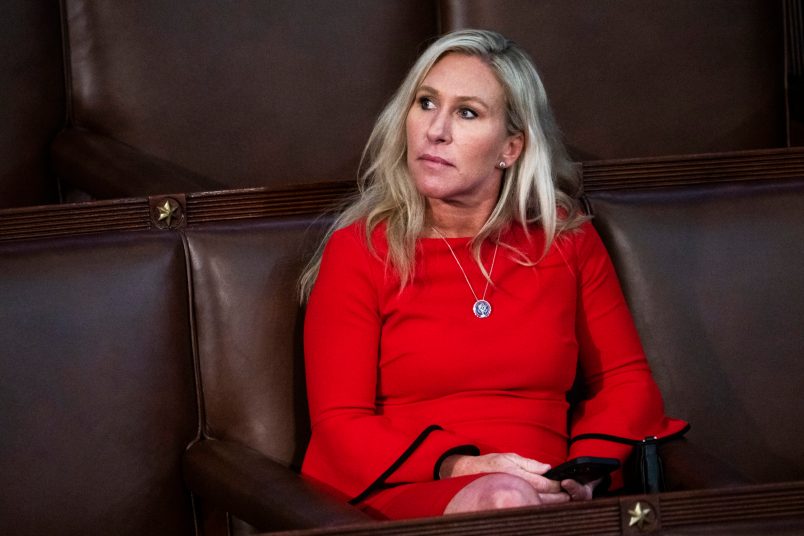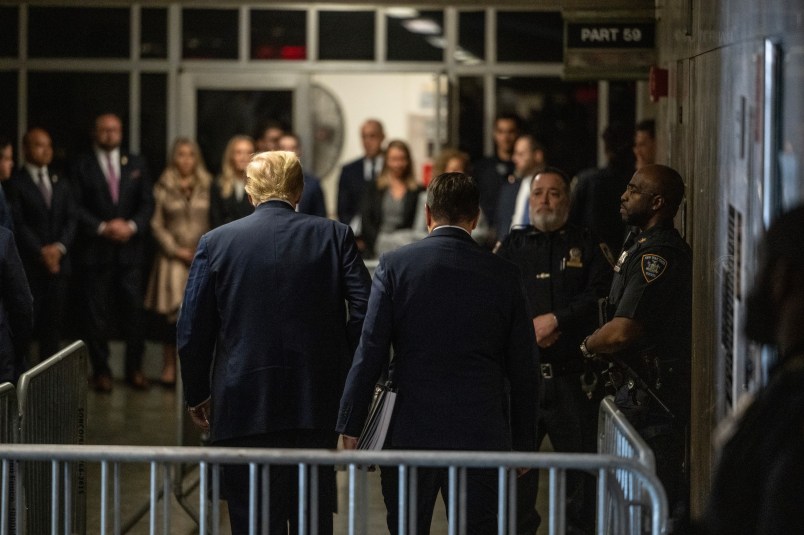Doug Feith, Undersecretary of Defense for Policy, had an OpEd in Saturday’s Washington Post. It is, I think, one of the clearest pieces of evidence for the strategic myopia at the heart of the Bush administration’s ‘war on terror’.
I say this for the following reason. One can find various statements Feith or his ideological soulmates have made and point out what you might find to be their conflation of the al Qaida and other threats, terrorist or otherwise. But here Feith is specifically trying to respond to such criticisms, thus putting his best and most focused argumentative foot forward.
And the result really does seem to be a fallacy as crude as one could possibly imagine.
It’s a short piece. So I strongly recommend reading it in its entirety. But a few quick points.
First of all, on the way to making his central argument, Feith indulges in some silly caricatures of his opponents’ thinking — never a good sign.
Here for example …
In the immediate aftermath of Sept. 11, the intelligence on the attackers was far from fully developed, and some critics of the administration were demanding evidence of the type needed for a conviction in a law court.
First, I think we can say that the predicate here is close to being false, though the language is vague enough as to be inherently subjective.
Whatever failures there may have been before 9/11, it seems undeniable that US intelligence rapidly compiled a great deal of information on the 9/11 attacks. And within days, if not hours, it was quite clear that this was an al Qaida operation. So the uncertainty Feith wants to convey just isn’t there.
As to the second point, who were these ‘critics’ exactly? The fall and winter of 2001 weren’t that long ago. And I can’t remember anybody who I would consider at all in the political mainstream either arguing that we lacked sufficient evidence to hold al Qaida responsible for 9/11 or that we needed courtroom evidence to strike out at them.
Either Feith is just being dishonest here or he is reacting to numerous subsequent cases where critics have demanded evidence for various groundless charges he has made and projecting this experience back on to 9/11.
But on to the crux of the matter.
The grafs that follow the above are these …
The term “war” meant that the enemy could not be thought of as a set of individuals who had perpetrated a particular crime. Nor was the enemy necessarily a single distinct organization. Rather, the enemy was understood to comprise all those who contributed to the terrorist threat to the United States, of which Sept. 11 was just the most serious instance to date. The enemy was thought of as the network of individuals, groups and states that committed or supported such acts of terrorism.
Going to war against terrorism meant going to war against this network. Obviously, those most directly responsible for Sept. 11 — we soon understood them to be the al Qaeda group based in Afghanistan — were primary targets. But that did not necessarily mean that attacking al Qaeda bases in Afghanistan had to be the first order of business. The timing and nature of U.S. military and other actions had to be designed to serve U.S. strategic purposes and to take into account what we could or could not expect to achieve militarily.
Here we have the heart of the fallacy, or rather an unknowing dissection of the fallacy by one of its authors. Finding particular points of interaction or cooperation between various hostile forces isn’t necessary because everyone constituting a certain sort of threat is bundled together into ‘the enemy’. And then once Feith has bundled them, the bundle is dubbed a ‘network’, thus stating as fact what Feith only sentences earlier thought unnecessary and, by implication, impossible to demonstrate with evidence.
Let’s look more closely.
Feith states that we are at war not with individuals (which is certainly true) nor even an organization (which is largely true). Then he makes the key leap. We’re not at war with any particular entity or organization, but rather all who pose a particular kind of threat — which he calls terrorist, but given the context he provides might also be called asymmetric or unconventional.
However that may be, he groups all these possible actors together based on the nature of their threat, regardless of whether they include the same individuals or even members of the same organization. It’s simply, if you pose a terrorist threat to the US then we’re at war with you.
Then in the next sentence he takes all of these threats — which he’s just classed together notwithstanding whether or not they are collaborating with one another — and calls them a ‘network’. And then in the very next: “Going to war against terrorism meant going to war against this network.” [itals added]
In other words, all those who present a terrorist threat to the United States are by definition in league with each other. If not by definition, then somehow it is assumed to be true almost a priori, without a need for any actual evidence.
We often hear wags mocking the president or other members of the administration for clumsy uses of the phrase “the terrorists”. As in, the terrorists want to do this, or the terrorists want to do that, as though “the terrorists” were a distinct group as opposed to various different actors using similar means. When we hear such things it’s easy to think, “Well, that’s unfair to criticize them for that. He’s talking broad brush or using rhetorical license.”
But when you see stuff like this you realize that’s not the case at all. The mumbo-jumbo isn’t a just matter of soundbites or campaign trail slogans. It goes right to the heart of the strategy.








